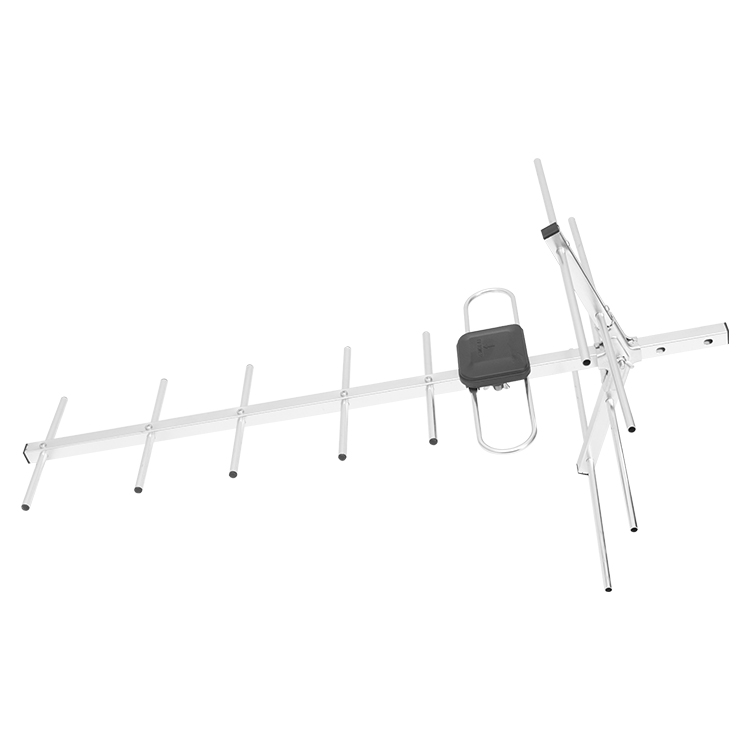Search by posts
Product category
News
 By Admin
By Admin
How do outdoor TV antennas handle interference from nearby structures or electronic devices?
Directional Antennas: These antennas are engineered with a specific reception pattern that focuses on signals from a particular direction, typically aligned with the broadcast towers. By concentrating reception in a specific direction, they inherently reject signals coming from other directions, including potential sources of interference such as nearby electronic devices or reflections from buildings. This directional gain not only enhances signal strength but also minimizes the impact of unwanted signals that could degrade reception quality.
Signal Filters and Amplifiers: Many outdoor TV antennas are equipped with built-in signal filters and amplifiers to manage interference. Filters are designed to attenuate frequencies outside the desired range, effectively blocking out signals that might interfere with the desired TV broadcast frequencies. This capability is crucial in urban environments where numerous electronic devices, Wi-Fi signals, and other RF transmissions can cause interference. Amplifiers, on the other hand, are used to boost weak signals, which can help overcome losses caused by interference and distance from broadcast towers, improving overall signal quality and reliability.
Antenna Placement Optimization: The placement of an outdoor TV antenna plays a critical role in minimizing interference. Mounting the antenna away from large metal structures, electrical wiring, and other potential sources of electromagnetic interference (EMI) is essential. These sources can generate RF noise that disrupts TV signals. Positioning the antenna at an optimal height and in a clear line of sight to the broadcast towers reduces the likelihood of signal obstruction or reflection, thereby improving reception stability and reducing interference effects.
Shielding and Grounding: High-quality outdoor TV antennas often feature robust shielding materials and effective grounding systems. Shielding helps to isolate the antenna's internal components from external EMI sources, preventing them from affecting signal reception. Proper grounding ensures that any electrical charges or static buildup are safely dissipated, further reducing the impact of interference and maintaining signal integrity. This combination of shielding and grounding is crucial in environments where electrical noise from nearby equipment or power lines could otherwise degrade TV signal quality.
Frequency Band Selection: Choosing an outdoor TV antenna that matches the frequency band used by local broadcasters is essential for minimizing interference. Antennas designed for specific frequency ranges are less susceptible to interference from signals outside their intended band. This specificity ensures that the antenna effectively captures the desired TV signals while rejecting unwanted frequencies that could cause interference. Understanding the frequency allocation for TV broadcasts in your area and selecting an antenna accordingly helps optimize signal reception and mitigate interference issues.
Advanced Interference Mitigation Techniques: Modern outdoor TV antennas often incorporate advanced digital signal processing (DSP) techniques to further mitigate interference. These techniques include adaptive filtering algorithms that can dynamically adjust the antenna's reception parameters in response to changing interference conditions. By continuously monitoring and analyzing incoming signals, DSP-equipped antennas can selectively enhance desired signals while suppressing unwanted noise and interference, ensuring consistent and reliable TV reception even in challenging environments.
Digital outdoor antenna LTEWith High Gain Reception_LTE function HD-07BVA1

Recommended products
-
Omni directional TV antenna HD-119A
-
High gain amplified antenna HD-118
-
Indoor&outdoor antenna HD-120
-
Paper antenna HD-110
-
Amplified indoor antenna UR-012FA
-
Omnidirectional TV antennas UR-012B
-
Omni directional antenna UR-012C
-
Magnet indoor antenna UR-012D
-
Antenna for rca UR-312
-
HD TV indoor antenna for rca UR-312
-
Small indoor antenna HD-020S
-
HD TV digital indoor antenna RFC-02

 English
English Español
Español











